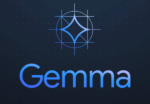I didn’t know which toy to play with first: Mac OS X 10.7 “Lion” running on my “late 2010” 13-inch MacBook Air, or the new Samsung Series 5 3G Chromebook. So, I’ve been playing with both of them.
Let’s start with Lion, which began shipping on Wednesday, July 20. I use the term “shipping” advisedly; for now, the only way to get Lion is to download it from Apple’s Mac App Store for US$29.95. It was a 3.7GB file, which fortunately transferred under an hour. I feel bad for those who don’t have a lot of bandwidth.
The word on the street is that Lion is a hybrid. It’s supposedly half Mac OS X and half iOS—the operating system found on the iPhone, iPad and iPod touch. Frankly, I don’t see it. There are only three things that are somewhat iOS-like in appearance:
• There is a new program launcher called Launchpad, which displays the icons for all your installed applications in a grid. Yeah, it’s kinda like the iPad. However, that’s a secondary way to start programs. In fact, Launchpad is an application itself, not a built-in part of the user interface. You can still start programs the way you always did: by pressing their icons on the Dock, by finding the apps in the Applications folder, or by double-clicking a file. The Launchpad is merely a new way to find the program you want to run.
• The Mail client has been redesigned and does look like the iPad version. Messages in a mailbox are listed on the left, while the contents of a selected message are shown on the right. Previously, the list of messages was on the top, and the selected message was shown on the bottom. There’s a setting to switch back to the old layout. Oh, and you can view messages organized by thread. Big deal.
• And the Address Book contact database has an interface that looks more like an old-fashioned contact notebook, which is definitely more like on the iPad. However, it behaves the same way as the Mac version always did, only with a slightly changed skin.
Beyond that, I don’t see much that’s iPad-like in the Lion user interface. And it’s a pretty incremental upgrade; an hour after installing Lion I forgot that it was a new operating system.
There are tons of new features and changes with Mac OS X 10.7, and I’m slowly exploring them. Overall, it’s a real improvement. But is it iOS on a MacBook Air? Nope, not even close.
Now, let’s talk about the Chromebook. Google generously promised to send a Samsung Chromebook to everyone who attended its Google I/O conference a few months ago, and mine arrived this week. (So, full disclosure: I didn’t pay for the $499 Chromebook, whereas I purchased my MacBook Air and Lion at retail.)
What’s a Chromebook? It’s a notebook that boots into a browser window. If you have a Google account, which I already do, you log into it, and can then use the browser to access your e-mail, calendar and social network, edit documents, and so on. You can browse to any other website you want; you’re not locked into Google’s sites or applications.
The Samsung hardware is nice. The notebook is small and thin, like my aluminum MacBook Air, but is made out of a high-quality plastic. The size (0.8 inches thick) and weight (3.3 pounds) compares favorably to the MacBook Air. The screen, at 12.1 inches, is smaller but is very sharp. Samsung claims 8.5 hours of battery life, which is certainly acceptable.
If you spend most of your time working in a browser, you’ll be at home using the Chromebook. It’s snappy and responsive, as long as your Internet connection is good. The 3G cellular wireless connectivity is a huge huge, huge plus. But if you’re not connected to the Internet, the Chromebook is a 3.3-pound paperweight. (I wish Apple would offer a version of the MacBook Air with embedded cellular wireless. I’d pay for the service.)
The idea of a computer without local storage is appealing. No files to clean up, no applications to upgrade, no viruses to guard against. You can log out of your Chromebook and give it to a friend. If you lose your Chromebook, it doesn’t matter—no files are at risk. Everything is in the cloud.
That’s the key point. For the Chromebook to be effective, you must become one with the cloud. There is no local storage. Documents, photographs, spreadsheets, source code, e-mail archives, music collections: everything must be in the cloud. It doesn’t have to be in Google’s cloud—you can use any cloud service—but the applications and data cannot reside locally on the device.
That’s why the Chromebook isn’t for me. I don’t live in the cloud, at least not today; my applications and data live on my hard drive. So, while I could use a Chromebook as a secondary computer, perhaps to take to a meeting, it’s not a computer I can live in.
But then again, I’m a power user, not the target audience for the Chromebook. It’s ideal for casual users, or for students, or for corporate employees (easy to enforce security policies!).
Verdicts:
Apple’s Mac OS X 10.7 Lion is a good evolutionary upgrade over the previous Snow Leopard version. However, claims that Lion turns the MacBook into an iPad are extremely exaggerated. Unless you have software that’s not compatible with the new operating system (like anything requiring Rosetta, which is no longer supported), you should consider the upgrade.
Google and Samsung have done a wonderful job with the Chromebook. The hardware is solid, the software is fast, and the system appears to be well engineered. It’s recommended for any workers whose data resides in the cloud, and who can find 100% of the software functionality they require from browser-based applications.
Alan Zeichick is editorial director of SD Times. Read his blog at ztrek.blogspot.com.






